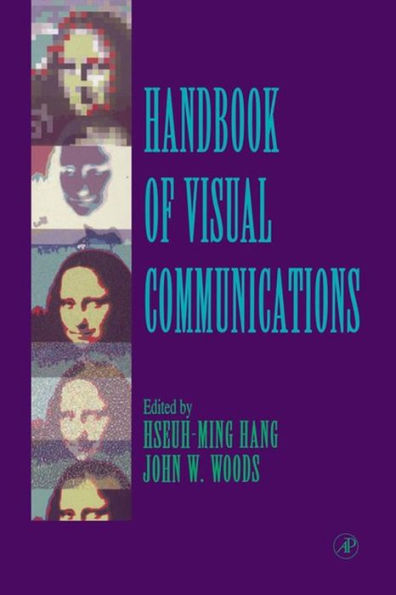Handbook of Visual Communications
This volume is the most comprehensive reference work on visual communications to date. An international group of well-known experts in the field provide up-to-date and in-depth contributions on topics such as fundamental theory, international standards for industrial applications, high definition television, optical communications networks, and VLSI design. The book includes information for learning about both the fundamentals of image/video compression as well as more advanced topics in visual communications research. In addition, the Handbook of Visual Communications explores the latest developments in the field, such as model-based image coding, and provides readers with insight into possible future developments.
1100696001
- Displays comprehensive coverage from fundamental theory to international standards and VLSI design
- Includes 518 pages of contributions from well-known experts
- Presents state-of-the-art knowledge--the most up-to-date and accurate information on various topics in the field
- Provides an extensive overview of international standards for industrial applications
Handbook of Visual Communications
This volume is the most comprehensive reference work on visual communications to date. An international group of well-known experts in the field provide up-to-date and in-depth contributions on topics such as fundamental theory, international standards for industrial applications, high definition television, optical communications networks, and VLSI design. The book includes information for learning about both the fundamentals of image/video compression as well as more advanced topics in visual communications research. In addition, the Handbook of Visual Communications explores the latest developments in the field, such as model-based image coding, and provides readers with insight into possible future developments.
- Displays comprehensive coverage from fundamental theory to international standards and VLSI design
- Includes 518 pages of contributions from well-known experts
- Presents state-of-the-art knowledge--the most up-to-date and accurate information on various topics in the field
- Provides an extensive overview of international standards for industrial applications
72.95
In Stock
5
1

Handbook of Visual Communications
518
Handbook of Visual Communications
518
72.95
In Stock

Product Details
| ISBN-13: | 9780080918549 |
|---|---|
| Publisher: | Elsevier Science |
| Publication date: | 12/02/2012 |
| Series: | Telecommunications |
| Sold by: | Barnes & Noble |
| Format: | eBook |
| Pages: | 518 |
| File size: | 12 MB |
| Note: | This product may take a few minutes to download. |
From the B&N Reads Blog
